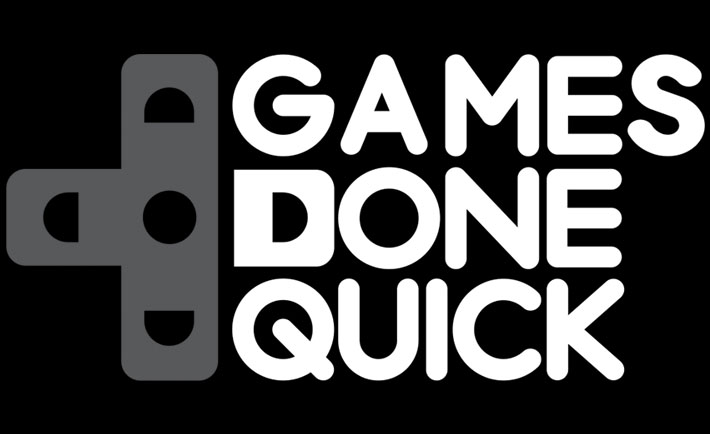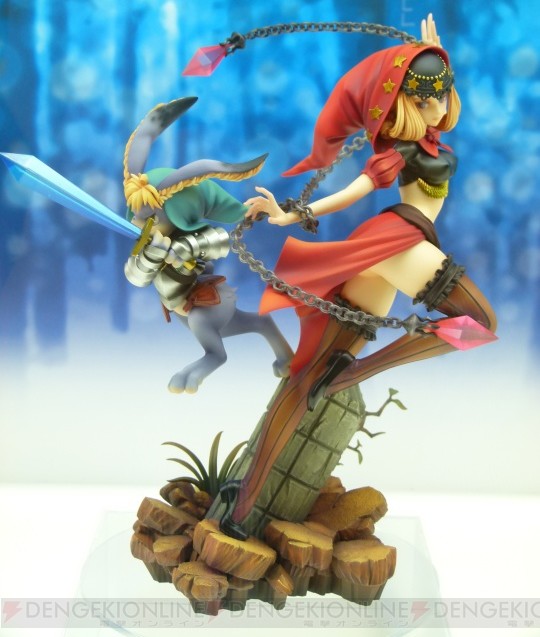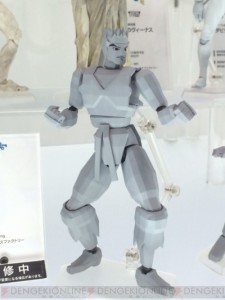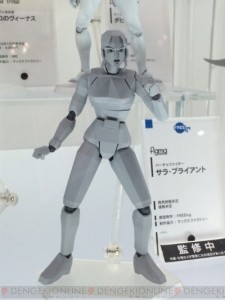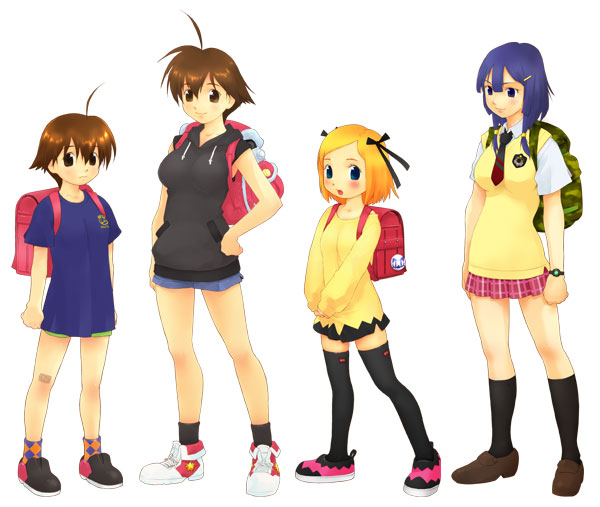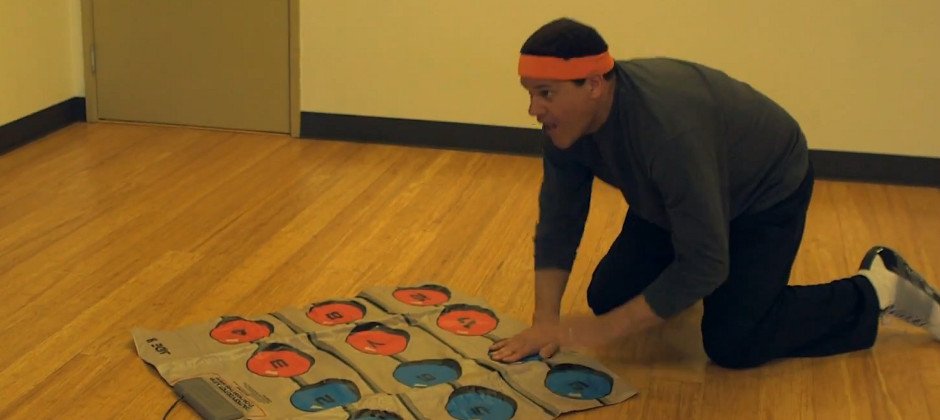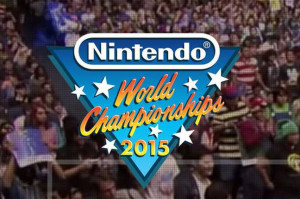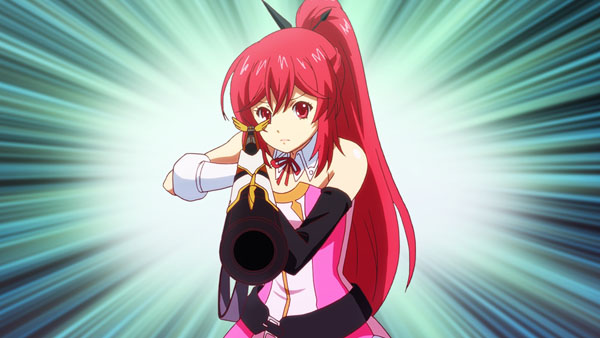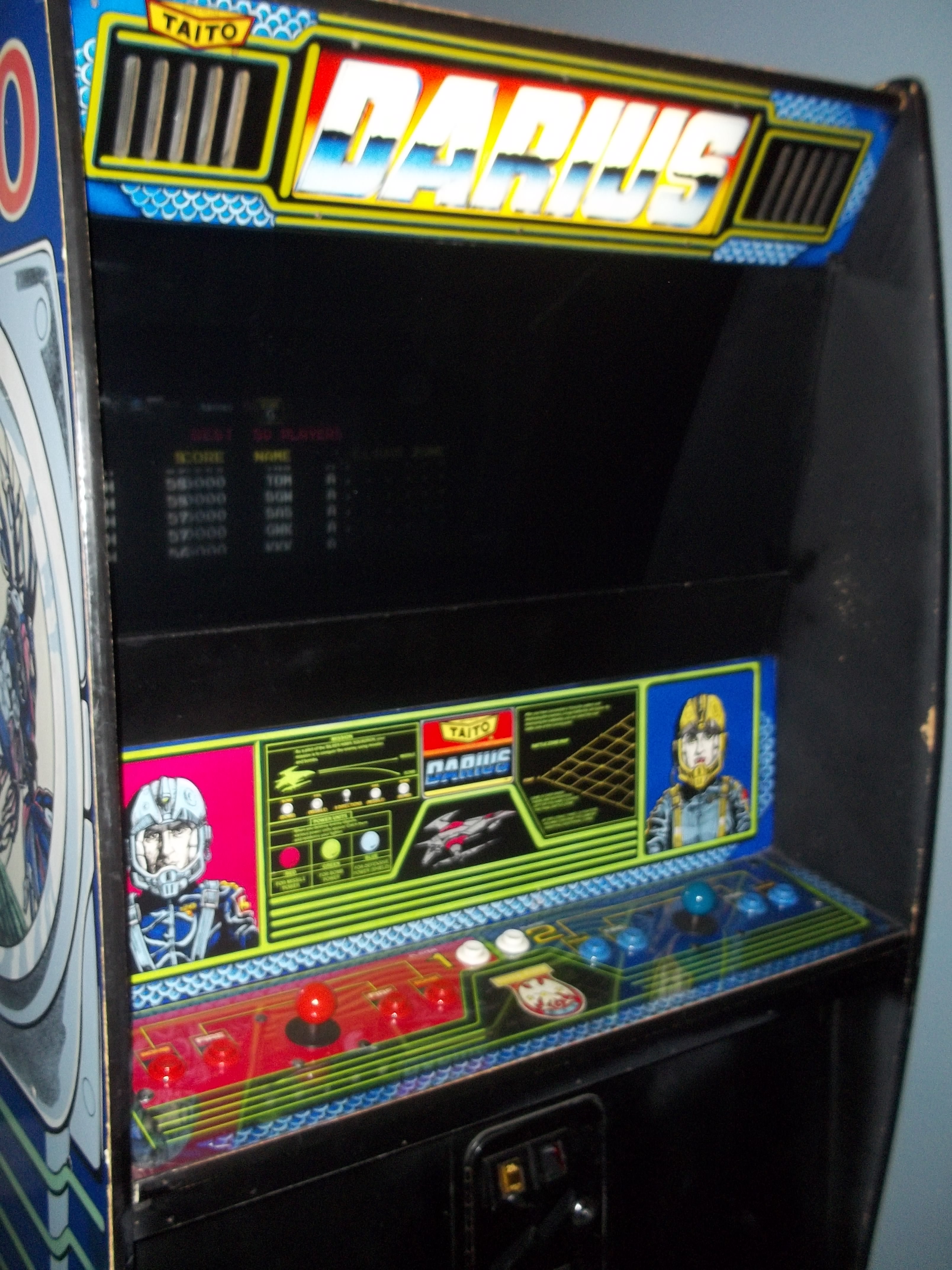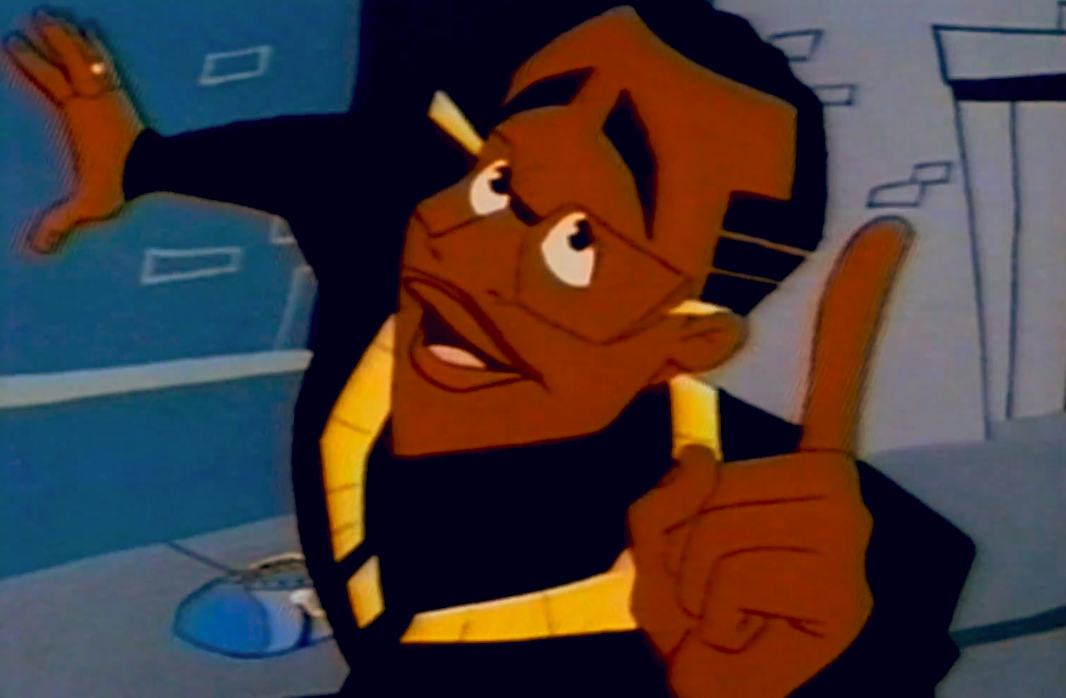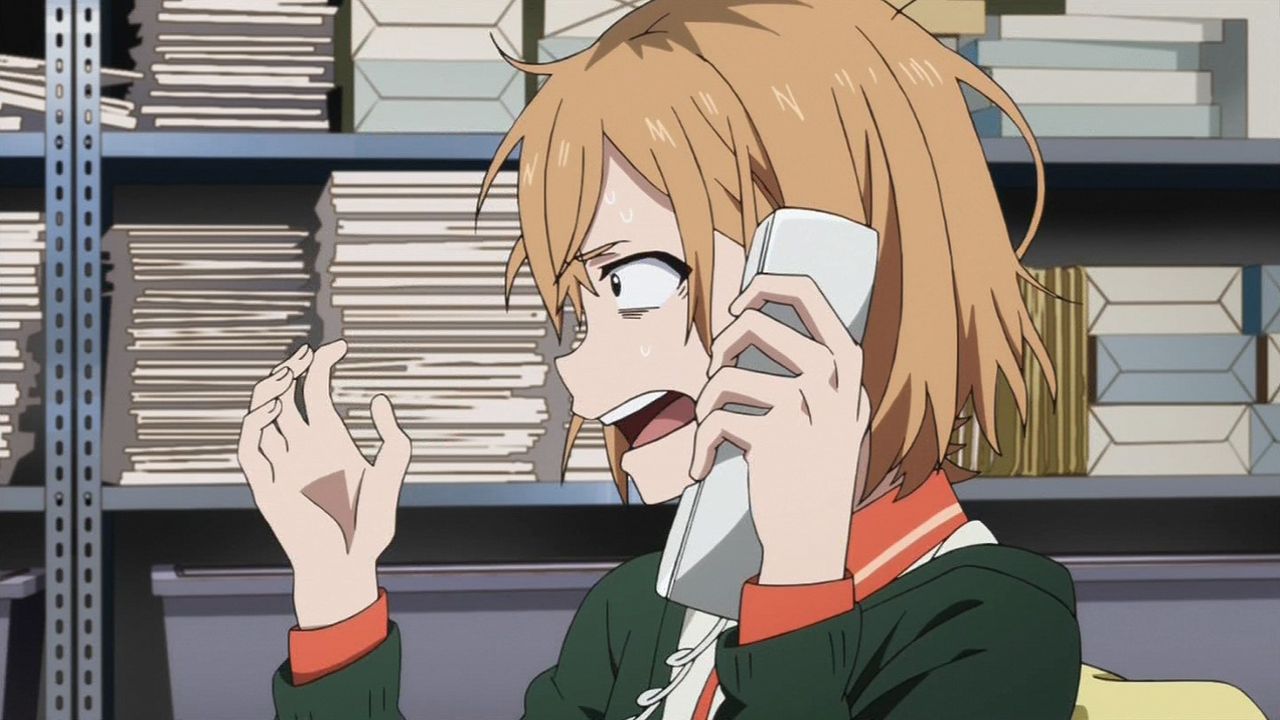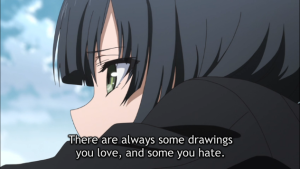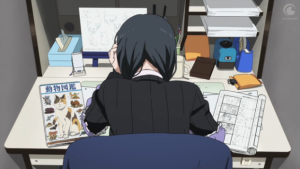Last week, another fine Games Done Quick event went down in the books, and as always, there were plenty of highlights: Swordless Zelda! More high-speed Tetris TGM! Races upon races with photo finishes! We watched, we stared in awe at amazing gaming skill, and we collectively raised $1.2 million dollars for Doctors Without Borders – a new record for the SGDQ events. But, as always, there are a lot of fantastic runs scheduled during an event that goes on for seven straight days that people with jobs and sleep schedules have to miss, particularly of games that might not be headliners like the Megamans and Marios and Metroids of the world. I’ve gone through and picked out some of my favorite runs from the event that you may have overlooked. Grab a drink, sit down, and watch some awesome folks play through some obscure (and a few not-as-obscure) games with amazing speed!
Interview: Hisayoshi Ogura of Ogura Hisayoshi Ongaseisakushow and Taito/ZUNTATA
(日本語版はここです。) La traduction française est ici.
One of the biggest names in classic game music – and one that persists to this day – is Taito’s house band/music production arm, Zuntata. Among the many storied composers who have worked for Zuntata over the decades is Hisayoshi Ogura, known to fans of the group as OGR. Ogura and his avant-garde game music was crucial in establishing Zuntata as one of the pioneers of arcade sound design with soundtracks like the Darius series, Ninja Warriors, The Legend of Kage, and Galactic Storm.
I’ve been a huge fan of Ogura’s work for a very long time, and I’m elated to finally have the opportunity to talk with him about his amazing body of work and present it to readers. Ogura’s compositions don’t get quite as much admiration in North America as they do in Japan and Europe, and I hope by bringing awareness to his work through this interview that more people will listen to his amazing classic game music. (To that end, I’ve included links to iTunes and Amazon music stores in places to help facilitate the acquisition of soundtracks he’s worked on!)
Very special thanks to Zekuu for helping to arrange this interview, along with Jason Moses and Feelwright and Co. for helping with translation/editing.
The Gaming Figures of Summer Wonder Festival 2015
Oh boy, it’s Wonder Festival time again! Yes, Japan’s twice-yearly figure and modelling extravaganza just had its annual summer outing, and there’s plenty of great new stuff on display – especially if you like games! It’s a bit tough to find the interesting gaming figures amongst the massive amount of goodies on display, however.
That’s where I come in to help! I’ve been carefully searching for info on gaming-related figures from the show, and I’ve collected everything I’ve dug up here on this page to serve as a one-stop information source to know what kind of delightful game character figures you can expect to see go up for preorder from your favorite importer/exporter in the near future.
You might notice that this list doesn’t include *all* the gaming figures shown at the event. Like I said last time I did this feature, I understand that I’m omitting a lot of stuff from series like Im@s, Love Live, KanColle, Tony’s Shining stuff, etc. I’m not going to argue something stupid like “these properties aren’t games” because they are, obviously! But there are just so damn many of them that they’d dominate the list. I’d rather give the focus to more obscure stuff because hey, obscurity is our lifeblood here! I’m also skipping over stuff that’s already out for preorder, was shown elsewhere very recently, and/or hasn’t changed significantly since its last showing (i.e. that Orchid Seed Sorceress from Dragon’s Crown that still lacks a color prototype).
Images are sourced from Akiba Hobby (possibly NSFW), Dengeki Online, MFC, Figsoku twitter and website, WHL4U, the Hobby Search blog, and the AmiAmi Blog. As always, if I’ve missed anything, let me know and I’ll add it ASAP!
So normally I try to sort by manufacturer, but this time I’m going to put what are by far the MOST IMPORTANT figure announcements first. I’m not even “Read more”-ing them, this is how important they are!
Yes, it’s Sarah and Akira! From the original Virtua Fighter! In their beautiful circa 1993 blocky polygon glory! In figma form! Holy crap, FREEing, you know how to get this girl’s attention (and, inevitably, money). Besides the crazy Sega nostalgia on display, this also means we are that much closer to the Vanessa figma thousands of fans are craving! (I count for thousands of fans, trust me.)
And now, everything else.
Thank you, Iwata
This is going to be much more stream-of-consciousness than most posts on here, but that’s the way writing from raw emotion is, I suppose. I’m writing this the morning after news of Iwata’s death broke.
I’ve talked with a fair few folks from Nintendo over the course of my career, but I never had the honor of speaking to Mr. Iwata himself. I already know that this will go down in my list of life regrets. People like Iwata are rare in the modern game industry.
I’ve made it very clear that I dislike most of the corporate leadership at game publishers. I loathe the fact that these people who don’t play games, who’ve never played games, and have no idea what makes a game good are telling the rank-and-file developers and coders beneath them what to do based on charts and buzzwords that cross their desk. These people have never written a line of code in their life, but are sure they know that you can ship a product with expansive features by a certain date, and if it’s still a buggy mess then screw it, release now and patch later! Employees, morale, creative energy, and quality products that actually work when you take them out of the box mean nothing to these people in search of the coveted bottom line to please shareholders.
I can see why investors like Michael Pachter hated Iwata’s business style. Just look at some of the questions Iwata got at investor meetings – people didn’t seem to understand why he ran Nintendo like he did. (Hell, we’ve all criticized Nintendo for being stubborn and old-fashioned at times.) But Iwata’s philosophy was clear: make consumers happy first and foremost. Pleasing investors was lower priority than pleasing the people who actually bought games.
It’s sad that this thinking seems so incredibly rare in the current game industry. After all, happy customers that stay happy for a long time become devoted fans, of which Nintendo has some of the most fervent out there. It was never a sprint, it was a marathon.
When Nintendo hit a rough patch a few years ago, rather than lay off employees, Iwata himself took a pay cut. He explained why:
Regarding why we have not reduced the number of the personnel, it is true that our business has its ups and downs every few years, and of course, our ideal situation is to make a profit even in the low periods, return these profits to investors and maintain a high share price. I believe we should continue working toward this ideal. If we reduce the number of employees for better short-term financial results, however, employee morale will decrease, and I sincerely doubt employees who fear that they may be laid off will be able to develop software titles that could impress people around the world. I believe we can become profitable with the current business structure in consideration of exchange rate trends and popularization of our platforms in the future. We should of course cut unnecessary costs and pursue efficient business operations. I also know that some employers publicize their restructuring plan to improve their financial performance by letting a number of their employees go, but at Nintendo, employees make valuable contributions in their respective fields, so I believe that laying off a group of employees will not help to strengthen Nintendo’s business in the long run.
This is something you don’t really understand if you haven’t worked in a rank-and-file development position, as Iwata did during the 80s at HAL. Cutting you off from the people you’re creating something with abruptly is soul-crushing, and development team layoffs rarely accomplish anything but contributing to the industry’s notorious instability and career churn rates. Iwata was the rare executive who knew the game industry from numerous perspectives, from that of the lowliest code monkey to the highest public-facing representative of a major company, and that had a tremendous impact on how he ran the show at Nintendo. He wasn’t afraid to get his hands dirty when he needed to, either: the stories of him shedding his executive clothes to do some hardcore coding on games like Earthbound, Pokemon G/S, and Super Smash Bros. Melee have been making the rounds.
Having experience as a coder has another benefit when running the ship at a game company, too: you know what is and isn’t feasible to accomplish with various tools and hardware. It helps you set realistic goals: there’s a big difference between “tough, but do-able” and “literally impossible given the time and tools.” People like Iwata have the ability to push for the former and avoid the latter. Sadly, there are very few of these people in management positions in the business, leading to the disappointing, half-finished, buggy AAA releases that seem to be clogging up the shelves (both real and virtual). Every Nintendo title – even if the game turns out not to be that great – still feels like a polished, complete product, something Iwata and his peers at the company knew was important.
One of the big things on my mind right now is – did Iwata know how bad his condition was? Did he tell anyone? The former I can’t be sure about – he had his first operation for “removing a growth” on his bile duct in 2014, which was phrased to make it sound fairly benign. Obviously, it wasn’t – and looking at the terrifyingly poor survival rates for bile duct cancer, I feel like he may have known his time was coming. In retrospect, his not attending E3 this year seems less “I have to stay and handle business for the Japanese side” and more “I am literally dying here but I can’t cast a pall over what is supposed to be a really fun show.” It seems like a very Japanese thing to devote yourself wholeheartedly to your work and colleagues even in the face of death, facing it stoically as you do your duties to the very end.
But even if he did know, did anyone else? It’s hard to say – some tweets and blogposts from Iwata’s dear friend Shigesato Itoi indicate that he was as blindsided as we were. It wouldn’t surprise me if he didn’t want to tell anyone. Itoi talks of Iwata’s selflessness; perhaps Iwata thought that telling people he was terminally ill would be an undue burden on them. That also strikes me as a very Japanese way of thinking.
Of course, it’s still just conjecture on my part. Unless Iwata’s widow outright says “he knew but didn’t tell anyone,” we can only theorize.
I hope that we, as an industry, will do more than pay lip service to Iwata’s memory. He was exemplary, a person in the game industry not for profit or pure personal glory, but out of a genuine love for the medium and its potential. What we need in this business is more people like him. Thank you, Iwata, for being a beacon of joy in an increasingly cynical industry. Let’s keep his light shining onwards.
Swinging on a Star: Toshinobu Kondou interview (Agatsuma/Studio Saizensen)
Umihara Kawase is perhaps the very definition of a cult game: a title that will never be part of the mainstream gaming zeitgeist, but something that a very devoted group of fans worldwide hold in a very special place of reverence. It’s very much a series made for a specific type of gamer, one who savors mastering complex mechanics to zip through levels with stunning speed and precision.Being able to play Umihara Kawase like a pro, however, is something that takes lots of practice. These are difficult, physics-heavy platform games that require a great deal of dedication to learn the ins and outs of, but once you do, the results are amazing – and immensely satisfying.1
Since its debut in 1996 on the Super Famicom, Umihara Kawase has been brought to life by a small team of artists, programmers, and designers. The lead designer, Kiyoshi Sakai, is currently employed by Agatsuma Entertainment, a company that acts as both a publisher and a go-between for developers and publishers. They’re responsible for the Guardian Heroes-inspired Code of Princess on 3DS, and more recently, they’ve put out the latest (and possibly final?) Umihara Kawase game on 3DS and PS Vita, Sayonara Umihara Kawase. The Vita version, published by Agatsuma themselves, is called Sayonara Umihara Kawase Plus and is available on PSN worldwide.
A key figure in the creation of these titles is Toshinobu Kondou, whose distinct character and art designs have come to define the beautifully surreal visual landscape of these titles. He’s also a part of Studio Saizensen, an independent development company. We talked over e-mail a bit with Kondou-san (and Sakai-san a bit as well) about the Umihara Kawase series as a whole and just what makes it so special.
Special thanks to GSK, Rica Matsumura, and Jason Moses for their assistance with this interview.
- If you haven’t already, check out the AGDQ run of the SFC original from earlier this year. It’s amazing (and hilarious). ↩
How to Power Up the Nintendo World Championships
Boy, E3 sure was a thing this year, wasn’t it? Announcements were made, expectations were blown away, and as many a thinkpiece writer has pointed out, it was like we were transported back into the 90s. I mean, look at how it started – Nintendo revived the Nintendo World Championships after 25 years of dormancy!
The NWC was one hell of a great way to start E3 this year. After seeing the great reception last year’s Smash Bros invitational got at E3, Nintendo decided to do something similar this year – but hold it before E3 rather than during to kick everybody’s week off in a Nintendo state of mind. And it worked!
…Mostly. As fun as the event was, there were several hiccups throughout that made me wince internally throughout the program. There were a lot of good things – and really, the decision to end on some downright evil Super Mario Maker levels was absolutely perfect – but if Nintendo wants to make this a regular thing from now on, the modern NWC has a long ways to go.
As I was thinking about this topic, I caught this episode of The Final Split, Go1den’s speedrunning-centric Twitch show, where NWC15 invitee Bananas talked about the experience. I highly recommend a watch, as there’s a lot of amusing stories in there about the run-up and the event.1 Going from her account, one gets the impression that things really were rather rushed and disorganized on Nintendo’s end.
Taking all of this into consideration, I decided to write an editorial of my own. How can the NWC improve from this point forward? I’ll posit several ideas.
- The Final Split is a really fun show to listen to in general, as well, and I wish Go1den and company would put it up in a more traditional podcast format. ↩
Imageepoch: The Best of Times, The Worst of Times, but Usually Just The Most Mediocre of Times
One of the more bizarre bits of drama that was going down in the Japanese game industry recently was the situation with developer/publisher Imageepoch. The CEO, Ryohei Mikage, had vanished without a trace, the company’s social media accounts went silent (or disappeared entirely), and the company’s latest game, the 3DS RPG Stella Glow, was wholly acquired by Sega1. Speculation over the health of the company ran rampant, and the rumors were confirmed earlier this month with the company’s filing for bankruptcy in Tokyo court.
(Even now, nobody knows Mikage’s whereabouts. I sincerely hope he’s okay…)
Imageepoch was an interesting company – it was built as an independent RPG development studio by the aforementioned Ryohei Mikage, a young developer and entrepreneur who had seen a fair bit of success in spite of his relatively young age. Over the course of the company’s life, he was able to lure big-name talent away from companies like Square-Enix, Namco Tales Studio, and Atlus in the hopes of turning Imageepoch into a RPG creating powerhouse – even going so far as to launch a label called “JRPG” in hopes of being seen as the future bearers of the genre. But obviously, things didn’t go quite as planned, and a little over a decade after their founding Imageepoch is no more.
I sat down with fellow Japanese game enthusiast Elliot Gay – formerly of Japanator and currently running his own import-centric site, Doki Doki Kusoge – to talk a bit about the life and times of Imageepoch. We’d both had quite a bit of experience with the company’s output: I’ve reviewed pretty much every English language release of their titles, while Elliot has spent a lot of time with the Japanese-exclusive releases. In this article, we take a look back together and remember Imageepoch’s brief, occasionally interesting, but mostly disappointing life and output.
- Atlus will be publishing in the West, however. ↩
Arcade Road Trip: Grinkers Grand Palace (Eagle, Idaho)
I’ve mentioned Game Center CX more than a few times in my writing, and for good reason – it’s a fantastic show that everyone who enjoys older games will appreciate. But while the most popular segment of the program among most fans is the Arino’s Challenge portions, I personally enjoy the “Tama-ge” bits a lot more. In these parts of the show, Arino travels to visit various arcades, large and small, across Japan. It’s a wonderful combination of travelogue and nostalgia, showcasing the (sometimes very odd) places where arcades turn up, the games and atmosphere that make that particular arcade experience interesting, and the people who maintain these game centers. It’s both inspiring and a bit depressing, as the number of mom-and-pop arcades in Japan has been plummeting over the last decade. Oftentimes, it feels like Arino’s travels are an attempt to encourage people to help preserve a dying cultural institution (the segment’s title means “You should visit this game center sometime”).
When I was a teenager, I used to love doing what Arino did during my family’s trips across the country – looking up arcades in the area, visiting them, and seeing what they had to offer. (I was especially devoted to this when Virtua Fighter 3 was really, really hard to find in North America outside certain urban areas – my hunts were often targeted towards finding that particular game.) Nowadays, this is hard to do, because the state of Western arcades is utterly miserable. Most arcades these days – the ones that are still around, anyway – are parts of massive “entertainment centers” that make far more off of redemption games than dedicated video cabinets, and what they do have for games is often old and suffering from disrepair. But there are enthusiasts out there trying to find ways to preserve the more traditional, video-game-focused arcade experience: one of the more popular modern concepts is the “barcade,” a combination of pub/eatery and retrogaming arcade catering to an older clientele.
Generally, most of my experiences with said “barcades”1 have been kinda blah – the alcohol part doesn’t do much for me since I’m one of those irritating teetotalers, and the game selection is generally pretty similar across many of these establishments: Pac-Man and Ms. Pac-Man, Galaga, a bunch of Donkey Kongs, some Space Invaders, probably a Tapper or two to fit the bar theme, Robotron 2064, and a Street Fighter or Mortal Kombat to get some 90s kid cred. These are good and all, but they’re also pretty easy to find. What I’m interested in are titles that you don’t see everyday, particularly Japanese games from the mid-late 80s – stuff that came out after the crash-correction of the Western video game market in the earlier part of the decade and is considerably less common as a result.
I discovered one such arcade on a recent trip. While I spent most of my life in Iowa, my parents retired to the Boise area in Idaho a couple years ago, so I went to visit my parents there over Mother’s Day weekend. My dad suggested stopping by a few arcades while I was there, and one of them was a place called the Grinkers Grand Palace in the Boise suburb of Eagle. It’s nestled into a corner of a strip-shopping center that doesn’t look like the kind of place that would host a bar-arcade. When I stepped inside, however, I knew I had found someplace very special. So today, I’m going to imitate our beloved Kacho Arino and tell you: you should go to Grinkers sometime!
Don’t touch this: the bizarre gaming influence of MC Hammer
The late 80s and early 90s are riddled with stories of meteoric rises to stardom and falls from grace, but perhaps none burned out quite as spectacularly (and publicly) as M.C. Hammer. We often forget just how much of A Big Deal Hammer and Vanilla Ice and other 90s musicians/groups were1. Honestly, I’m not sure if even modern social media powered bands like One Direction come close to just how visible, overblown, and heavily merchandised Hammer and company were. We laugh at the ridiculous crap their faces were plastered upon now, but at the time, these guys defined coolness to young people.
Yes, MC Hammer had it all in the early 90s: mansions, racehorses, a vanity Saturday morning cartoon series, and the admiration of millions, yet numerous poor investment decisions, a taste for expensive theatrics, and constantly overextending himself eventually bit him in the ass. I’m honestly surprised people didn’t see it coming at the time – watching the 2 Legit 2 Quit music video again, over 20 years after its debut, will rid you of any pity you might feel for his extravagant lifestyle and rapid crash really fast. The amount of sheer ego and hubris on display here is simply jawdropping.
One privilege that major English language recording artists have is that their stuff faces very few barriers to worldwide acceptance. Popular English music is inherently a global thing, just like Hollywood films, even in territories where English isn’t widely spoken. Such is the case with Japan as well, where audiences were equally taken by Hammer’s impressive dance moves, slick beats, and flashy performances. While his contemporary Vanilla Ice may have earned eternal infamy in Japan by becoming a nasty Jojo’s Bizarre Adventure villain with a prominent bulge, Hammer wound up getting tributes (and attempted tributes) in a handful of games, including an all-time classic.
- NKotB comes to mind, as well – we still haven’t found their NES game yet, but the prototype box has changed hands for a ridiculous sum. ↩
Anime on anime: Shirobako
Though I risk putting myself up for intense mockery, I must get this confession out of the way immediately:
I cried during Shirobako.
It was the arc during episodes 7 and 8, where Ema Yasuhara is struggling with her craft as a key animator. She wants to do good quality work, but she has to learn to do things quickly, because the production is falling behind schedule and deadlines are cruel in the world of making anime. But the people checking her are unhappy with her work, asking her to redo it. She just can’t seem to get it right to her and their satisfaction, and she’s terrified, because not delivering something acceptable means that people won’t give her more work. She wants to be proud of her work, she wants others to like her work, but her own self-doubts and frustration and a looming deadline are crushing her. All she wants to do is make a living off the creative work she loves, but now she’s doubting her ability to do that.
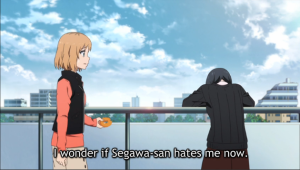 I cried alongside her as she voiced her fears to the lead character, Aoi Miyamori. I knew how she felt. I’d been where she was many times over. Sometimes I still find myself feeling like her. It’s a scary, scary place to be, and here it felt all too real. Even as I was watching it again to get screens for this article, it felt like a gut-punch: seeing her just barely holding it together in front of Aoi and going into full-blown panic after she steps away.
I cried alongside her as she voiced her fears to the lead character, Aoi Miyamori. I knew how she felt. I’d been where she was many times over. Sometimes I still find myself feeling like her. It’s a scary, scary place to be, and here it felt all too real. Even as I was watching it again to get screens for this article, it felt like a gut-punch: seeing her just barely holding it together in front of Aoi and going into full-blown panic after she steps away.
This is one of the many reasons why Shirobako is such a terrific show: the emotional highs and lows of the characters resonate with anyone who has ever gone to work in a field they were starry-eyed over. It’s a show about following your dreams, seeing the reality of those youthful dreams firsthand, and struggling to come to terms with exactly why you’re following those dreams.
It’s an anime about people who make anime.
